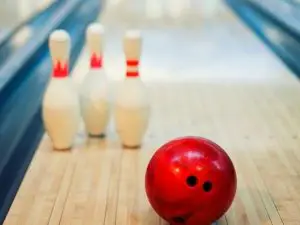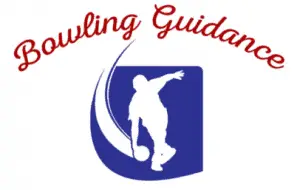
American Bowling Congress standardized the rules of 9-pin bowling in 1895. Yes, 9-pin bowling is that old. They have also developed the organization of this bowling. During the colonial time, there was widespread popularity for ninepins in the United States. Workers started to neglect their work and rather hung out in 9-pin bowling alleys.
This continued till the early 19th century. Then came the original tenpins replacing the ninepins which led to the official prohibition in most places. But ninepins still holds a special place for many bowling enthusiasts. Are you one of them? Are you looking for 9-pin bowling rules before you go to a certain bowling center and play? Well, good news, you’ve come to the right place!
What is 9 pin bowling?
If you’re a regular ten-pin bowler, 9-pin bowling will seem very different to you. From pin setting to the scoring system, a lot of things are different. Did you ever hear the term ‘kegel’? Well, nine-pin bowling is often referred to as ninepins, kegel, or kegeln. In America, this particular bowling is played using the same lane as we use for conventional ten-pin bowling.
The major difference between nine pin and ten pin bowling is – you guessed it – how many bowling pins there are to knock down.
Another big change is that nine-pin bowling doesn’t have its own automatic pinsetter. Plus, due to having a different scoring system, you can’t even find the electronic scoring system or scoreboard. Therefore, both pin-setting and scoring are done manually. That will take you back to the early 20th century when tenpins were manual as well.
Usually, bowlers prefer dry lane conditions for nine-pin bowling. Although the lane can be a bit oiled in your local alley slightly oiled lane is best for THS. This allows you to do the hook release which is similar to the ten-pin bowling hooking.
How To set up 9-pin in Bowling Lane?
The pin-setting layout in nine-pin bowling is pretty unique. All of the nine pins are lined up in a way to give them a diamond shape. The #9 pin is considered the kingpin and it is placed right in the center. The center pin is red in color. Besides its position and color, the #9 pin has a significant value in the scoring. All the rest of the pins (#1 to #8) are placed equally distant from the #9 pin. From the other side of the foul line, you will see #1 on the very front row. Then #2 and #3 are on the second row. On the middle and third row, you will see #4, #9, and #5. Right behind this row, you will find #6 and #7 standing. On the very last row, the #8 can be seen standing.
Unlike the conventional tenpins, in kegel, the pins are positioned quite further apart from one another. The width of the pins is the same in both ten-pin and nine-pin bowling. But here’s the catch. The ninepins are a bit longer than the typical tenpins. What we think is interesting is that the nine-pin rack can offer more splits than usual ten-pin bowling. So knocking down pins in ninepins is much easier than regular 10-pin bowling.
As mentioned, the pin setting is done manually as there isn’t any machine that sets up the pins automatically. So for this sport, there is a pin-setter who puts the pins back in their places and also returns the balls to the players.
How to play nine pin bowling?
Since the scoring system is different, players need to play ninepins differently too. Although the approach, ball swing, and release will be as same as usual ten-pin bowling, it’s the aiming that is different in ninepins. You will have two turns, and on each turn, you will be able to bowl three balls.
After you’re done delivering the first three balls, the total score will be marked on the manual scoreboard. Then time for the next turn. Again the total score from this turn will be marked and the score from the previous turn will be added to this. Thus you will get your final score.
In ninepins, the bowlers stand in the delivery area and then they roll a bowling ball through the center of the lane. This makes it pretty tough to knock down the pins at the far end. If the ball miss hitting any of the pins, it’s called a ‘poodle’ and the player gets -1 point for that. If the bowler can knock down all of the pins, then it is called a ‘nine-ringer’ and gets 9 points for that. If that bowler knocks down every pin except for the kingpin, he/she will achieve a ‘twelve-ringer’ , meaning, 12 points will be given for that.
If you cannot score 9 nor 12 in a roll, a ‘-’ (dash) will be marked in your scoreboard and it will carry no point value. But there is an exception. If on the very last roll, you can knock down some pins, you will get credit for it.
One of the best ways to score well in ninepins is to hook the ball a little so you can either hit the pins from the left or right side. You are most likely to score better when you follow this tactic.
Conclusion
Ninepins can be really fun if played right. It’s a shame that 9-pin bowling has lost its popularity and is banned in most of the area. Thankfully, in Texas, you can still find some places where you can bowl ninepins. So if you ever visit there, or in any European countries, don’t forget to give it a try. Nothing’s more fun than exploring. So why not play nine-pin bowling at least once?

